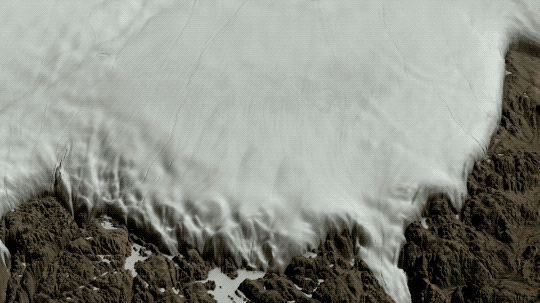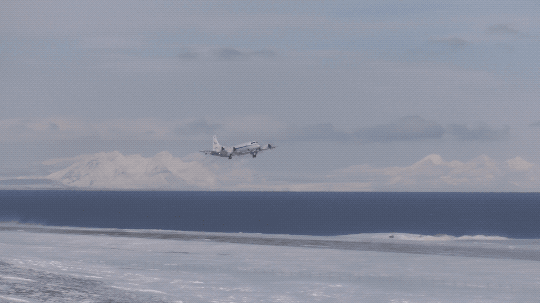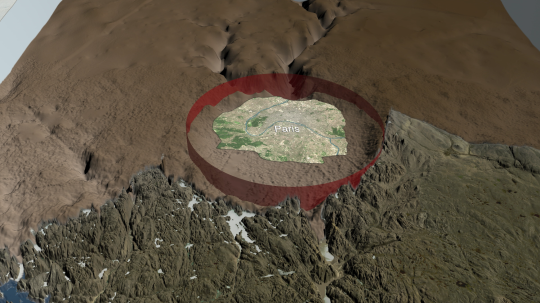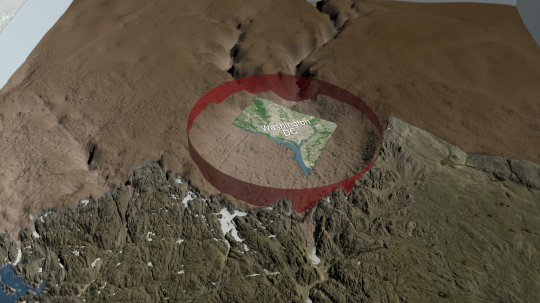
For the first time ever, we’ve found a massive crater hiding under one of Earth’s ice sheets. Likely caused by a meteor, it was uncovered in Greenland by a team of international scientists using radar data.

The data was collected by missions like our Operation IceBridge, which flies planes over Greenland and Antarctica to study the ice and snow at our planet’s poles.

In this case, the crater is near Hiawatha Glacier, covered by a sheet of ice more than half a mile thick. We’re pretty sure that the crater was caused by a meteor because it has characteristics traditionally associated with those kinds of impacts, like a bowl shape and central peaks.

It’s also one of the 25 largest impact craters in the world, large enough to hold the cities of Paris or Washington, D.C. The meteor that created it was likely half a mile wide.

Currently, there’s still lots to learn about the crater – and the meteor that created it – but it’s likely relatively young in geologic timescales. The meteor hit Earth within the last 3 million years, but the impact could have been as recent as 13,000 years ago.

While it was likely smaller than the meteor credited with knocking out the dinosaurs, this impact could have potentially caused a large influx of fresh water into the northern Atlantic Ocean, which would have had profound impacts for life in the region at the time.

Go here to learn more about this discovery: https://www.nasa.gov/press-release/international-team-nasa-make-unexpected-discovery-under-greenland-ice

Operation IceBridge continues to uncover the hidden secrets under Earth’s ice. IceBridge has been flying for 10 years, providing a data bridge between ICESat, which flew from 2003 to 2009, and ICESat-2, which launched in September. IceBridge uses a suite of instruments to help track the changing height and thickness of the ice and the snow cover above it. IceBridge also measures the bedrock below the ice, which allows for discoveries like this crater.
Make sure to follow us on Tumblr for your regular dose of space: http://nasa.tumblr.com







Комментариев нет:
Отправить комментарий